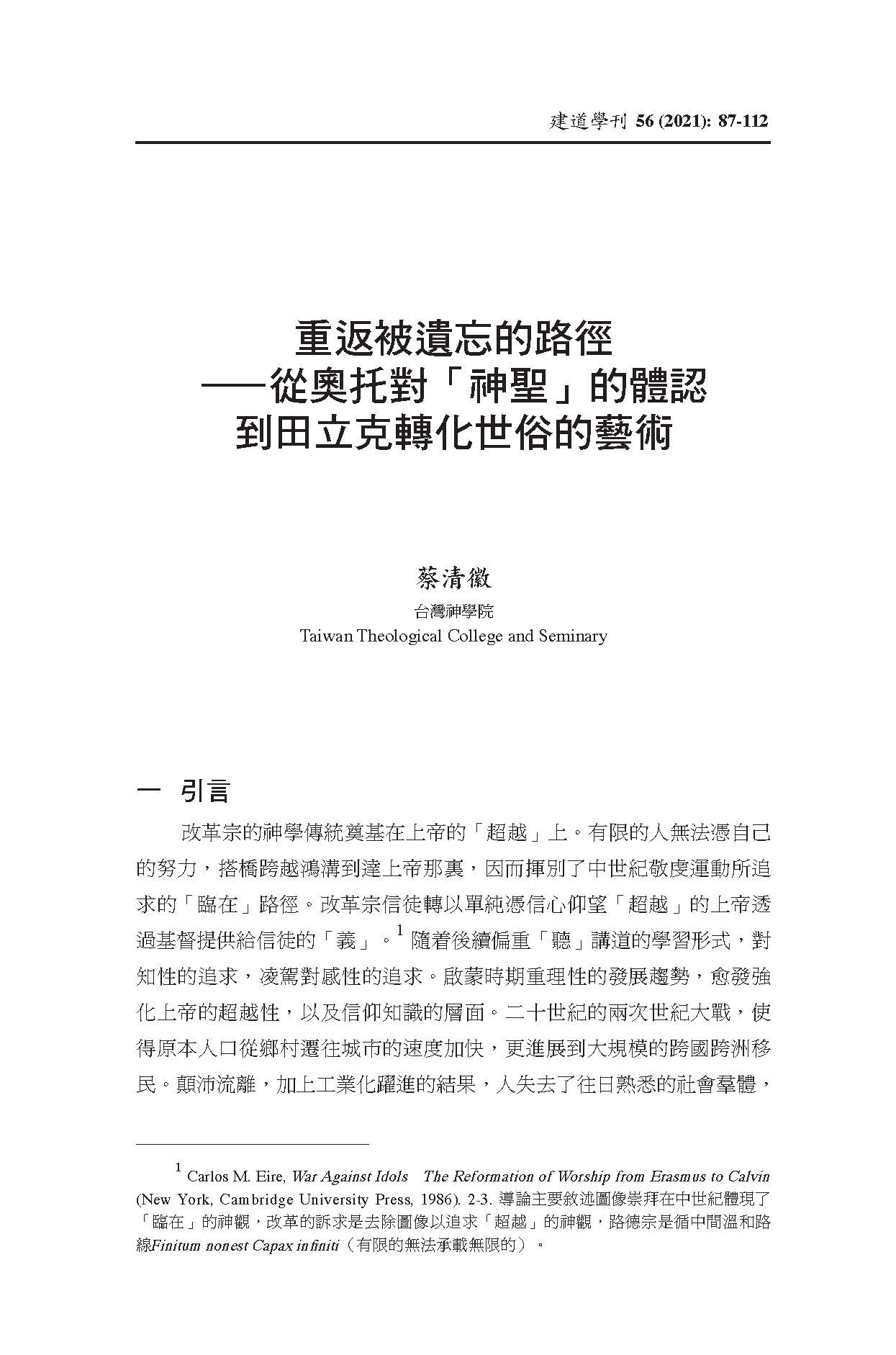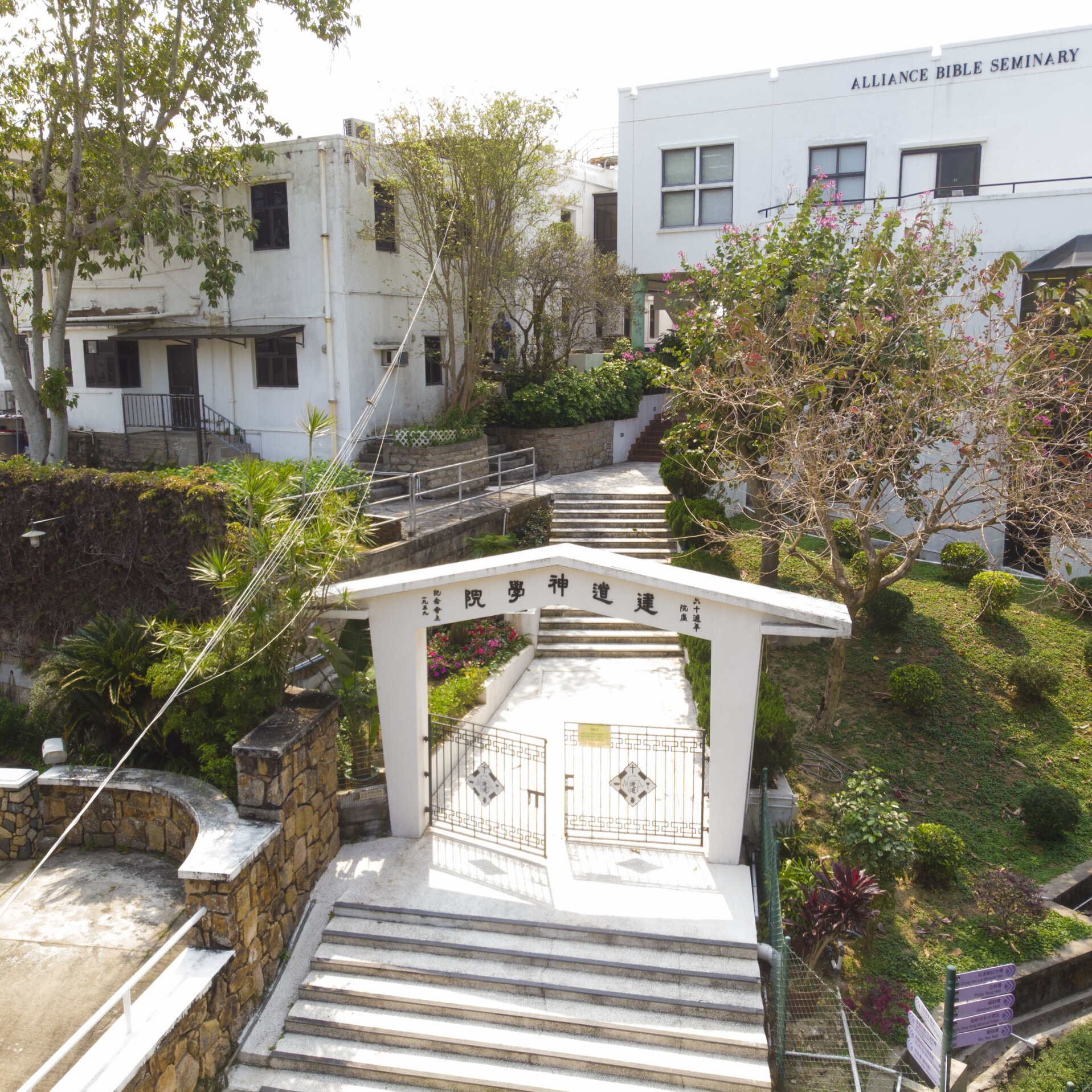重返被遺忘的路徑—從奧托對「神聖」的體認到田立克轉化世俗的藝術 / 蔡清徽
蔡清徽
撮要
宗教學者伊利亞德主張「神聖」與凡俗相對立,人們能意識到「神聖」是因為它的異質性,也因為這本是人的天賦。然而現代人因焦慮的生存狀態和與「神聖」隔絕,愈發傾向「去神聖化」,偏好凡俗。聖與俗二分化的結果, 使人遠離神,任憑世界加速在無神論中墮落,活在與上帝疏離的狀態中。解決之道是重新喚起人的「神聖」意識,對抗凡俗的力量。魯道夫.奧托在《神聖的觀念》一書中,以「奧祕的畏懼」和「努曼」重新定義「神聖」,是遇見「絕對他者」的兩種極端感受和體驗—「畏懼」和「着迷」。藉由奧托,以及追溯啟發他的馬丁路德路線,讓我們了解神聖的焦慮導致的改革,是如何從路德的「神聖」體驗產生的。最後,本篇連接至路德宗神學家田立克,透過他的「藝術神學」透視「藝術神蹟」是如何以表現和轉化途徑,將人與「存有之底」,也就是「神聖」連結,將「世俗」轉化至「神聖」。
ABSTRACT
Religious scholar Mircea Eliade observes the duality between the sacred and the secular. One can be aware of the sacred for it stands in stark contrast to the prevailing secular, and also due to one’s inborn instinct. However, one’s tendency to de-sanctify things in preference for the secular is largely due to the state of anxiety and disparity from God. As a result of the increasing dualistic trend, one loses touch with the divine, abandoning the world to further depravity and living in estrangement from God. The only resolution is to restore one’s consciousness of the Holy to combat the forces of the secular. In his book The Idea of the Holy , Rudolf Otto defines the Holy as the Being who invokes bipolar sentiments of “Mysterium Tremendum” and “Numinous”, Latin terms coining fear and fascination experienced by one’s encounter with the Absolute Other. By learning from Otto and tracing his path back to Reformer Martin Luther who inspired him, we draw conclusion about the angst-triggered reform as outcome of Luther’s encounter with the Holy. At the end, we turn to Paul Tillich, also a Lutheran theologian, and his Theology of Art to gain insight on the miracles of art, particularly in its expressive and transforming power in connecting man to the ground of being, and reclaiming the secular back to the holy.
原載於《建道學刊》56期(2021年7月),頁 87-112。
Latest Articles
新手牧者研究計劃(三):新手牧者的身心靈狀態 / 盧慧儀
2025 年 11 月 19 日
個體與關係:滕近輝思想中「深化」的靈性觀 / 倪步曉
2025 年 11 月 18 日
香港九龍塘基督教中華宣道會之起源和發展史/陳智衡
2025 年 10 月 20 日
Highlights
[電子書]困境與抉擇:「建道研究中心30週年誌慶」跨學科研討會論文集/廖炳堂、倪步曉主編
2025 年 1 月 2 日
從梧州到長洲:建道神學院125年的挑戰與恩典 / 陳智衡
2023 年 10 月 1 日
微小教會的見證/高銘謙
2023 年 6 月 1 日







